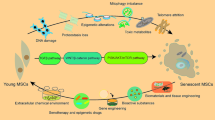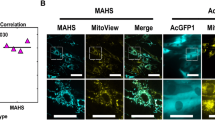Abstract
Introduction
Mesenchymal stem cells (MSCs) are drawing considerable attention in the field of regenerative medicine due to their differentiation capabilities. The miRNAs are among the most important epigenetic regulators of MSC differentiation. Our previous study identified miR-4699 as a direct suppressor of the DKK1 and TNSF11 gene expression. However, the precise osteogenic-related phenotype or mechanism caused by miR-4699 change has yet to be dealt with in depth.
Material and Methods
In the present study, miR-4699 mimics were transfected into human Adipose tissue-derived mesenchymal stem cells (hAd-MSCs) and osteoblast marker gene expression (RUNX2, ALP, and OCN), was analyzed to investigate whether miR-4699 promotes osteoblast differentiation of hAd-MSCs through targeting the DKK-1 and TNFSF11. We further examined and compared the effects of recombinant human BMP2 with miR-4699 on cell differentiation. In addition to quantitative PCR, analysis of alkaline phosphatase activity, calcium content assay, and Alizarin red staining were used to explore osteogenic differentiation. To evaluate the effect of miR-4699 on its target gene (on protein level) we utilized the western blotting technique.
Results
The overexpression of miR-4699 in hAd-MSCs resulted in the stimulation of alkaline phosphatase activity, osteoblast mineralization, and the expression of RUNX2, ALP, and OCN osteoblast marker genes.
Conclusion
Our findings indicated that miR-4699 supported and synergized the BMP2-induced osteoblast differentiation of mesenchymal stem cells. We suggest, thereof, the utilization of hsa-miR-4699 for further in vivo experimental investigation to reveal the potential therapeutic impact of regenerative medicine for different types of bone defects.




Similar content being viewed by others
Availability of data and materials
The datasets used and/or analyzed during the current study are available from the corresponding author upon reasonable request.
References
Fung B, Hoit G, Schemitsch E, Godbout C, Nauth A (2020) The induced membrane technique for the management of long bone defects: a systematic review of patient outcomes and predictive variables. Bone Joint J 102:1723–1734
MaroltPresen D, Traweger A, Gimona M, Redl H (2019) Mesenchymal stromal cell-based bone regeneration therapies: from cell transplantation and tissue engineering to therapeutic secretomes and extracellular vesicles. Front Bioeng Biotechnol 7:352
Han Y, Li X, Zhang Y, Han Y, Chang F, Ding J (2019) Mesenchymal stem cells for regenerative medicine. Cells 8:886
Rahman MS, Akhtar N, Jamil HM, Banik RS, Asaduzzaman SM (2015) TGF-β/BMP signaling and other molecular events: regulation of osteoblastogenesis and bone formation. Bone research 3:1–20
Baron R, Rawadi G (2007) Wnt signaling and the regulation of bone mass. Curr Osteoporos Rep 5:73–80
Bajada S, Marshall MJ, Wright KT, Richardson JB, Johnson WE (2009) Decreased osteogenesis, increased cell senescence and elevated Dickkopf-1 secretion in human fracture non union stromal cells. Bone 45:726–735
Kobayashi Y, Udagawa N, Takahashi N (2009) Action of RANKL and OPG for osteoclastogenesis. Crit Rev Eukaryot Gene Expr. 19:61–72
Venegas KR, Aguilera M, Garre MC, Hernández MAC (2013) Pharmacogenomics of Osteoporosis-Related Bone Fractures. In: Barh D, Dhawan D, Ganguly N (eds) Omics for Personalized Medicine. Springer, New Delhi. https://doi.org/10.1007/978-81-322-1184-6_29
Awasthi H, Mani D, Singh D, Gupta A (2018) The underlying pathophysiology and therapeutic approaches for osteoporosis. Med Res Rev 38:2024–2057
Li Z, Rana TM (2014) Therapeutic targeting of microRNAs: current status and future challenges. Nat Rev Drug Discovery 13:622–638
Hosseini V, Mohammadi-Yeganeh S, Ghanbarian H, Hashemi SM, Khojasteh A (2018) The power of precise bioinformatics prediction of miRNA: mRNA interactions: miR-4699 as a potential inducer of Wnt signaling pathway. J Cell Biochem 119:5960–5969
Grünhagen J, Bhushan R, Degenkolbe E, Jäger M, Knaus P, Mundlos S, Robinson PN, Ott CE (2015) MiR-497∼ 195 cluster microRNAs regulate osteoblast differentiation by targeting BMP signaling. J Bone Miner Res 30:796–808
Pfaffl MW, Horgan GW, Dempfle L (2002) Relative expression software tool (REST©) for group-wise comparison and statistical analysis of relative expression results in real-time PCR. Nucleic Acids Res 30:e36-e
Untergasser A, Ruijter JM, Benes V, van den Hoff MJ (2021) Web-based LinRegPCR: application for the visualization and analysis of (RT)-qPCR amplification and melting data. BMC Bioinformatics 22:398
Schindelin J, Arganda-Carreras I, Frise E, Kaynig V, Longair M, Pietzsch T, Preibisch S, Rueden C, Saalfeld S, Schmid B, Tinevez JY, White DJ, Hartenstein V, Eliceiri K, Tomancak P, Cardona A (2012) Fiji: an open-source platform for biological-image analysis. Nat Methods 9:676–682
Gaur T, Lengner CJ, Hovhannisyan H, Bhat RA, Bodine PV et al (2005) Canonical WNT signaling promotes osteogenesis by directly stimulating Runx2 gene expression. J Biol Chem 280:33132–33140
Mori K, Kitazawa R, Kondo T, Maeda S, Yamaguchi A, Kitazawa S (2006) Modulation of mouse RANKL gene expression by Runx2 and PKA pathway. J Cell Biochem 98:1629–1644
Bain G, Müller T, Wang X, Papkoff J (2003) Activated β-catenin induces osteoblast differentiation of C3H10T1/2 cells and participates in BMP2 mediated signal transduction. Biochem Biophys Res Commun 301:84–91
Cao X (2018) RANKL-RANK signaling regulates osteoblast differentiation and bone formation. Bone research 6:35
Amankwah EK, Devidas M, Teachey DT, Rabin KR, Brown PA (2020) Six candidate miRNAs associated with early relapse in pediatric B-cell acute lymphoblastic leukemia. Anticancer Res 40:3147–3153
Wei F, Zhang J, Zhang Y, Zheng R, Leng X, Fang C. (2021) MicroRNA-4699–3p inhibits the proliferation and migration of ovarian cancer cells by regulating the expression of mitochondrial ribosomal protein S23. J Chin Phys. 1044–8.
Tian E, Zhan F, Walker R, Rasmussen E, Ma Y, Barlogie B, Shaughnessy JD Jr (2003) The role of the Wnt-signaling antagonist DKK1 in the development of osteolytic lesions in multiple myeloma. N Engl J Med 349:2483–2494
Frey JL, Li Z, Ellis JM, Zhang Q, Farber CR, Aja S, Wolfgang MJ, Clemens TL, Riddle RC (2015) Wnt-Lrp5 signaling regulates fatty acid metabolism in the osteoblast. Mol Cell Biol 35:1979–1991
Butler JS, Murray DW, Hurson CJ, O’Brien J, Doran PP, O’Byrne JM (2011) The role of Dkk1 in bone mass regulation: correlating serum Dkk1 expression with bone mineral density. J Orthop Res 29:414–418
Kapinas K, Kessler C, Ricks T, Gronowicz G, Delany AM (2010) miR-29 modulates Wnt signaling in human osteoblasts through a positive feedback loop. J Biol Chem 285:25221–25231
Zhang J, Tu Q, Bonewald LF, He X, Stein G, Lian J, Chen J (2011) Effects of miR-335-5p in modulating osteogenic differentiation by specifically downregulating Wnt antagonist DKK1. J Bone Miner Res 26:1953–1963
Iwamoto N, Fukui S, Takatani A, Shimizu T, Umeda M, Nishino A, Igawa T, Koga T, Kawashiri SY, Ichinose K, Tmai M, Nakamura H, Origuchi T, Chiba K, Osaki M, Jüngel A, Gay S, Kawakami A (2018) Osteogenic differentiation of fibroblast-like synovial cells in rheumatoid arthritis is induced by microRNA-218 through a ROBO/Slit pathway. Arthritis Res Ther 20:1–10
Zheng L, Tu Q, Meng S, Zhang L, Yu L, Song J, Hu Y, Sui L, Zhang J, Dard M, Cheng J, Murray D, Tang Y, Lian JB, Stein GS, Chen J (2017) Runx2/DICER/miRNA pathway in regulating osteogenesis. J Cell Physiol 232:182–191
Sui L, Wang M, Han Q, Yu L, Zhang L, Valverde P, Xu Q, Tu Q, Chen J (2018) A novel Lipidoid-MicroRNA formulation promotes calvarial bone regeneration. Biomaterials 177:88–97
Liu X, Xu H, Kou J, Wang Q, Zheng X, Yu T (2016) MiR-9 promotes osteoblast differentiation of mesenchymal stem cells by inhibiting DKK1 gene expression. Mol Biol Rep 43:939–946
Genda Y, Arai M, Ishikawa M, Tanaka S, Okabe T, Sakamoto A (2013) microRNA changes in the dorsal horn of the spinal cord of rats with chronic constriction injury: A TaqMan® low density array study. Int J Mol Med 31:129–137
Danks L, Takayanagi H (2013) Immunology and bone. J Biochem 154:29–39
Wada T, Nakashima T, Hiroshi N, Penninger JM (2006) RANKL–RANK signaling in osteoclastogenesis and bone disease. Trends Mol Med 12:17–25
Tang P, Xiong Q, Ge W, Zhang L (2014) The role of microRNAs in osteoclasts and osteoporosis. RNA Biol 11:1355–1363
Pitari MR, Rossi M, Amodio N, Botta C, Morelli E, Federico C, Gullà A, Caracciolo D, Di Martino MT, Arbitrio M, Giordano A, Tagliaferri P, Tassone P (2015) Inhibition of miR-21 restores RANKL/OPG ratio in multiple myeloma-derived bone marrow stromal cells and impairs the resorbing activity of mature osteoclasts. Oncotarget 6:27343
Hu C-H, Sui B-D, Du F-Y, Shuai Y, Zheng C-X, Zhao P, Yu XR, Jin Y (2017) miR-21 deficiency inhibits osteoclast function and prevents bone loss in mice. Sci Rep 7:43191
Li S, Zhang H, Li S, Yang Y, Huo B, Zhang D (2015) Connexin 43 and ERK regulate tension-induced signal transduction in human periodontal ligament fibroblasts. J Orthop Res 33:1008–1014
Zhang X, Geng G, Su B, Liang C, Wang F, Bao J (2016) MicroRNA-338-3p inhibits glucocorticoid-induced osteoclast formation through RANKL targeting. Genet Mol Res 15:1–9
Acknowledgements
The author thanks the Cellular and Molecular Biology Research Center and Medical Nanotechnology and Tissue Engineering Research Center, Shahid Beheshti University of Medical Sciences, Tehran, Iran, for providing technical support.
Funding
This project was funded by Shahid Beheshti University of Medical Sciences, Tehran, Iran (Contact grant No: 32003). The funders had no role in the study design, data collection, analysis, decision to publish, or preparation of the manuscript.
Author information
Authors and Affiliations
Contributions
VH: conceptualization, investigation, formal analysis, methodology, resources, writing—original draft, writing—review, and editing. Ak: data curation, investigation, formal analysis, resources, writing—original draft, writing—review, and editing. HMC: methodology and writing—review and editing. SM-Y and MP: conceptualization, formal analysis, funding acquisition, methodology, writing—original draft and writing—review and editing.
Corresponding authors
Ethics declarations
Conflict of interest
The authors declare no competing conflict of interest concerning the work described.
Ethical approval
This project was approved and supervised by the ethical committee of Shahid Beheshti University of Medical Sciences, (ethics number Iran (IR.SBMU.REC.1401.002)).
Additional information
Publisher's Note
Springer Nature remains neutral with regard to jurisdictional claims in published maps and institutional affiliations.
Supplementary Information
Below is the link to the electronic supplementary material.
About this article
Cite this article
Hosseini, V., Paryan, M., Koochaki, A. et al. Mir-4699 promotes the osteogenic differentiation of mesenchymal stem cells. J Bone Miner Metab 41, 481–491 (2023). https://doi.org/10.1007/s00774-023-01433-y
Received:
Accepted:
Published:
Issue Date:
DOI: https://doi.org/10.1007/s00774-023-01433-y




